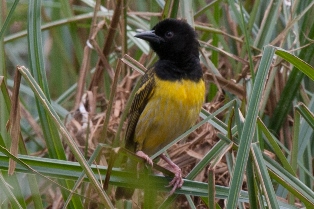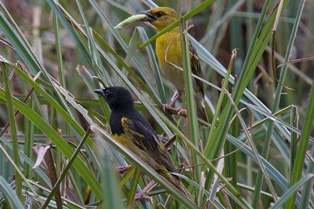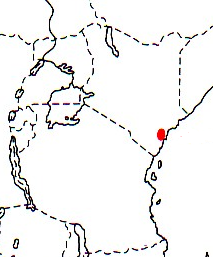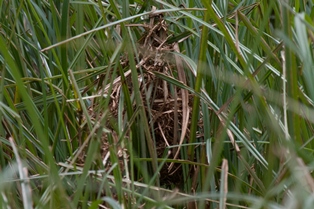Weaver Wednesday [62]: Clarke's Weaver 2013-08-21 (408)
 Weaver Wednesday
Weaver Wednesday


The Clarke's Weaver Ploceus golandi is a relatively poorly known species, with a limited global range. The male has a black head, breast and back, dark eye, slender bill. The similar Dark-backed Weaver P. bicolor, the only other forest weaver in its range, has a yellow belly (rather than pale yellow and white), dark rump and tail (rather than olive), and whitish wing feather edgings (rather than yellow edges). The female Dark-backed is like the male, while the female Clarke's Weaver is dull with streaked upperparts, yellow underparts, and yellow wing edgings.

The Clarke's Weaver is found only in the Arabuko-Sokoke Forest and Dakatcha area in south-east Kenya (see map left, based on Birds of Africa). Its total range is 535 km2, and in 1985 its population was estimated at 1000-2000 pairs. It is listed as "Endangered" (see Weavers by threat status), due to its restricted range, and it is vulnerable to forest clearance and wetland destruction.
The Clarke's Weaver inhabits coastal forest and is most frequent in miombo (Brachystegia) woodland; it needs wetlands for breeding and has also recently been found to roost in wetlands (source).
Its diet is mainly insects such as beetles, caterpillars and scale insects; but also feeds on fruits of Loranthus and Brachystegia spicifomis. Clarke's Weaver forages mostly in the canopy, in feeding flocks of up to 30, occasionally more than 100 individuals. It sometimes joins mixed-species flocks, especially helmet-shrikes (Prionops species). It may be found in single-sex flocks. At times it is conspicuous and gregarious, but flocks appear erratically. Other bird species apparently hawk insects that are flushed by the weavers, which are shy and restless.

Nothing was known about breeding until an active colony was discovered in March 2013 (source). This date fits in with the suspected breeding season of February-March when the rains begin, since juveniles have been seen from March to August. It was a large colony, and Brian Finch estimated some five hundred nests concentrated in the small area of sedges (source). The monitoring team from Nature Kenya and the Dakatcha Woodland Conservation Group estimated that at least 700 birds were present. Adult weavers were bringing insects to the colony to feed nestlings (eg female in photo, top right). Nests have been collected and will be measured and described formally. Details of breeding (mating system, clutch size, egg colours and sizes, incubation and nestling periods, etc) are still unknown. Read more about the discovery of the colony here.
The Clarke's Weaver has one PHOWN record but many more are needed PHOWN summary. Submit any weaver nest records to PHOWN (PHOtos of Weaver Nests) via the Virtual Museum upload site.
All the above photos were kindly provided by Colin Jackson, who also submitted the first PHOWN record for the species.
PHOWN summary
Previous Wedn: Black Bishop
Full weaver species list
|


 Weaver Watch
Weaver Watch


